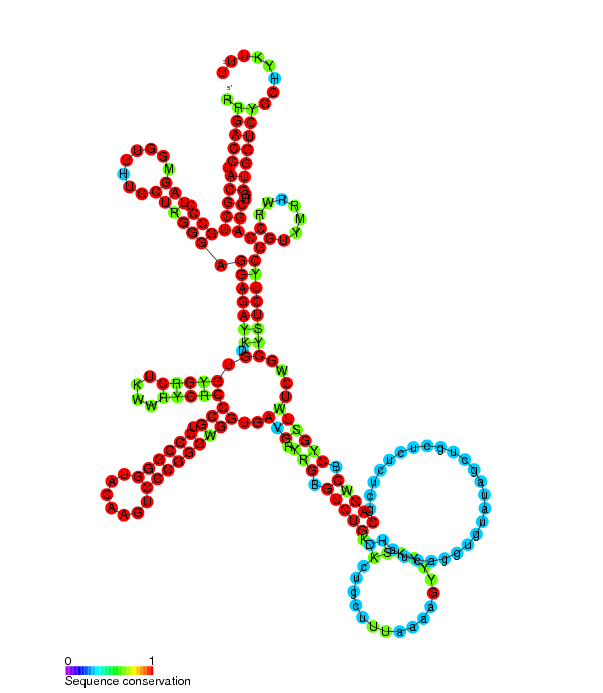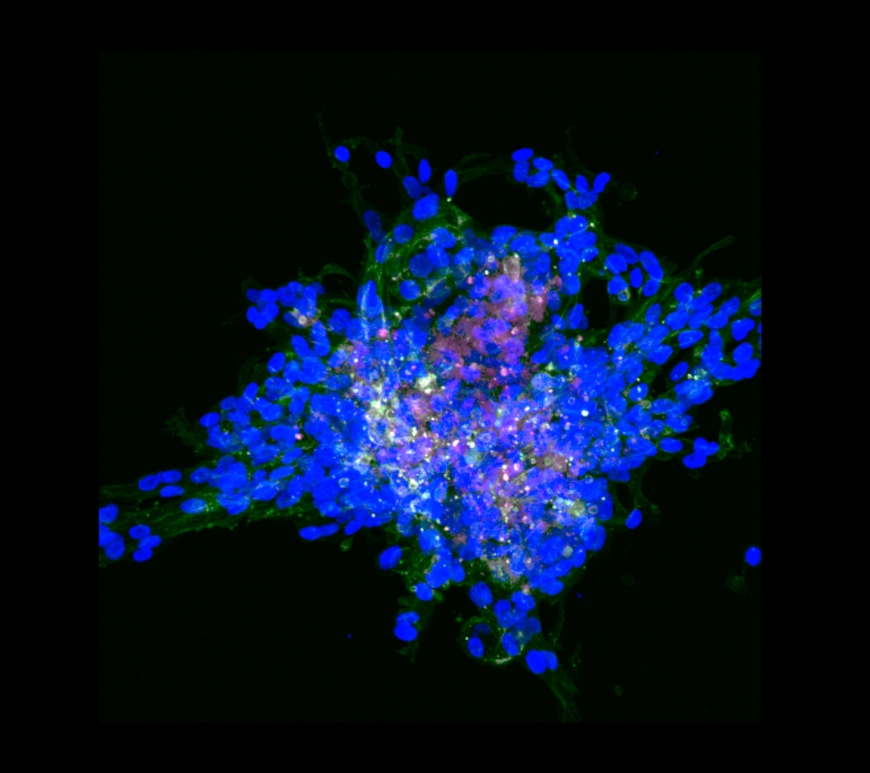
 Sticky post
Sticky post
Inhibition of Hydrolytic Enzyme May Protect Against Manifestation of AD-Linked Phenotypes
Author: Vignesh Subramanian, Class of 2024 Figure 1: Barnes maze tests were performed to assess the spatial reference memory of the knock-in AD mouse models. Alzheimer’s disease (AD) is a progressive, neurodegenerative disease characterized by significant memory loss and cognitive decline that worsen with age. While the disease’s long-established hallmarks include the aggregation of two misfolded proteins known as beta-amyloid and phosphorylated tau, recent research … Continue reading Inhibition of Hydrolytic Enzyme May Protect Against Manifestation of AD-Linked Phenotypes
 Sticky post
Sticky post
Neuroprotective Therapies Capable of Ameliorating Ischemic Injury in Post-Thrombectomy Care
Vignesh Subramanian, Class of 2024 Figure 1: A thrombectomy is a surgical procedure aimed at removing blood clots lodged in an artery of the brain. A stroke is a medical emergency in which blood flow to the brain is disrupted. Strokes may be ischemic (lacking blood supply to brain tissue due to a blocked artery) or hemorrhagic (involving bleeding into the brain tissue due to … Continue reading Neuroprotective Therapies Capable of Ameliorating Ischemic Injury in Post-Thrombectomy Care
2023 YIWC is ongoing!
For the fourth year in a row, the Young Investigators Writing Competition is open for applications!As always, the winner of each category will have their piece published in our Young Investigators Review Fall Journal. Our Fall 2022 and Spring 2023 journals can be read here (the entries of the winners of YIWC 2022 start on page 34 of the Fall 2022 edition).The deadline has been … Continue reading 2023 YIWC is ongoing!

Modeling Debris Patterns in the Antarctic to Protect Biodiversity
Marie Collison, Class of ‘25 Image 1 Gentoo penguins in Antarctica Marine pollution is a prominent problem in environmental policy and study. Reports of pollution in organisms in the Antarctic are becoming increasingly common, likely due to increasing human activity, growing tourism, and an expanding krill fishing industry. However, the sources of these pollutants along the West Antarctic Peninsula are still poorly understood. There are … Continue reading Modeling Debris Patterns in the Antarctic to Protect Biodiversity

Uncovering a Novel Biomarker For The Identification of Parkinson’s-Related Diseases
Author: Sean Krivitsky, Class of 2026 Parkinson’s disease is a severe neurodegenerative disorder most commonly occurring in late adulthood. It is primarily characterized by motor dysfunctions such as uncontrollable tremors and stiffness. Since there is no conclusive test for diagnosis of the disorder, neurologists rely on a comprehensive evaluation system, combining symptoms and physical assessments to gauge the likelihood that an individual has Parkinson’s. A … Continue reading Uncovering a Novel Biomarker For The Identification of Parkinson’s-Related Diseases

Mysterious Long Non-Coding RNAs Revealed as Playing a Role in Gastric Cancer
Author: Sean Krivitsky, Class of 2026 To the astonishment of many, nearly 99% of the human genome consists of non-coding regions that are not transcribed into mRNAs for protein synthesis. However, some of those non-coding regions of DNA can be transcribed into various types of non-coding (nc) RNAs, including long ncRNAs. Until recently, the scientific community believed these ncRNA products to be functionally irrelevant, playing … Continue reading Mysterious Long Non-Coding RNAs Revealed as Playing a Role in Gastric Cancer

Uncovering a Key Mechanism of Rett Syndrome Pathology
Author: Sean Krivitsky, Class of 2026 Rett syndrome (RTT) is a severe neurological disorder found primarily in females that causes impairment in essential functions including breathing, eating, and walking abilities. The disorder is characterized by slowed brain growth, which can lead to various mental and physical disabilities. Key markers and causes of RTT are mutations on a gene called MECP2. MECP2 is an X-linked gene … Continue reading Uncovering a Key Mechanism of Rett Syndrome Pathology

Linking Key Immune System Components to Cancer Progression
Author: Sean Krivitsky, Class of 2026 Breast cancer is the most frequently diagnosed form of cancer in the world and is one of the leading causes of cancer-related deaths. Triple-negative breast cancer (TNBC), a common type of breast cancer, is fast-growing and is associated with consistent poor prognosis. Unlike several other types of breast cancer, TNBC possesses a unique pathogenic mechanism, which means that it … Continue reading Linking Key Immune System Components to Cancer Progression

Orbitofrontal Cortex Studies May Pave the Way to Treating Social Anhedonia
Author: Kimberly Johnston, Class of 2026 Social anhedonia is a psychological condition characterized by a diminished ability to experience pleasure from social interactions and activities. It is associated with greater symptom severity and poorer response to treatment in individuals with Major Depressive Disorder (MDD). In individuals with MDD and social anhedonia, abnormalities in the orbitofrontal cortex (OFC) may hinder the brain’s ability to properly respond … Continue reading Orbitofrontal Cortex Studies May Pave the Way to Treating Social Anhedonia

Decoding Schizophrenia: Potential Mechanisms of the Schizophrenic Brain Could Lead to Novel Treatments
Author: Kimberly Johnston, Class of 2026 Schizophrenia (SCZ) is a mental disorder characterized by severe impairments in working memory (WM), a type of short-term memory responsible for temporarily storing and manipulating information needed to perform tasks, solve problems, and make decisions. A key region of the brain involved in this process is the medial prefrontal cortex (mPFC), which is active during internal thinking and deactivated … Continue reading Decoding Schizophrenia: Potential Mechanisms of the Schizophrenic Brain Could Lead to Novel Treatments

Watermelon Snow: A Medium for Antibiotic Resistance Research
Author: Marie Collison, Class of ‘25 A common adaptation of bacteria is antibiotic resistance, a very important field of study in microbiology and medicine. Antibiotic resistance genes (ARGs) can arise naturally and exist as an important natural survival tool for bacteria. ARGs have risen in frequency in human-inhabited regions as a result of increased use of antibiotics. As a result, there is growing concern over … Continue reading Watermelon Snow: A Medium for Antibiotic Resistance Research

Exploring the Biodiversity Inhabiting Sponges of the Great Barrier Reef
Author: Marie Collison, Class of ‘25 Sponges are a diverse group of multicellular organisms that inhabit aquatic ecosystems all over the globe. Scientists estimate that there are over 9000 unique species of sponges. The vast diversity of sponges enables them to provide a diverse range of habitats for a variety of aquatic taxa. They provide structure to environments that otherwise have minimal variation in elevation. … Continue reading Exploring the Biodiversity Inhabiting Sponges of the Great Barrier Reef

Is Chamomile Actually a Risk for Surgery?
Author: Marie Collison, Class of ‘25 Chamomile is a plant that is widely used in herbal medicine for a wide variety of reasons. It has been reported to have anti-inflammatory, antioxidant, anticarcinogenic, antidepressive, and sedative properties. Despite these benefits, current medical recommendations list chamomile as a substance that should not be ingested prior to surgery due to fears that it may increase the risk of … Continue reading Is Chamomile Actually a Risk for Surgery?


